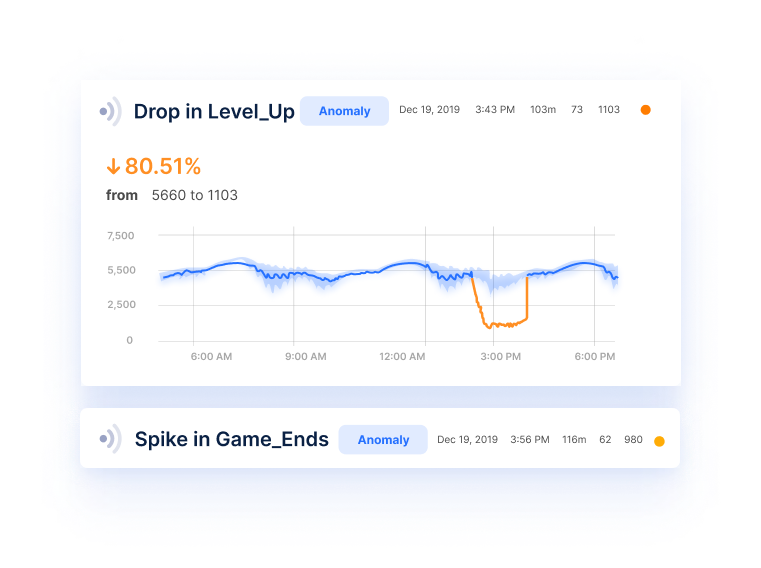In the modern digital marketplace, the launch of a new video game has transformed from a simple retail event into a global cultural spectacle. Gone are the days when success was measured solely by day-one sales figures and pre-order numbers. Today, a new, more dynamic metric has taken center stage: viewership on live streaming platforms. Among these, Twitch stands as the undisputed titan, and the data it generates—particularly the “Hours Watched” metric—has become a critical barometer for a game’s immediate impact and long-term potential. Understanding the nuances of Twitch News is no longer just for the dedicated Gaming Community; it’s essential for developers, publishers, investors, and players alike.
This deep dive explores the profound influence of Twitch viewership on the Gaming Industry. We will dissect the anatomy of a successful streaming launch, analyze what the data truly signifies, and examine the ripple effect these numbers have across the entire gaming ecosystem, from Game Development to the Gaming Hardware market. For anyone interested in the business and culture of Video Games, grasping the “Twitch Effect” is key to understanding where the industry is heading.
The Anatomy of a Viral Game Launch on Twitch
A game’s journey to the top of the Twitch charts is a complex interplay of strategic marketing, influencer collaboration, and genuine community excitement. It’s a phenomenon that can make or break a title in its crucial opening weekend, turning a promising release into a global sensation or relegating it to obscurity. This process is driven by metrics that offer a far richer story than traditional sales data.
Beyond Sales Figures: The Rise of Viewership Metrics
For decades, the primary success indicators were tangible: units sold, revenue generated. While still vital, these numbers don’t capture the full picture of player engagement in the age of Game Streaming. This is where viewership analytics come in. Key metrics include:
- Hours Watched: The cumulative time viewers have spent watching streams of a specific game. This is often considered the most important metric as it reflects sustained interest and deep engagement, not just fleeting curiosity. A high Hours Watched count for a new release in PC Gaming or on consoles is a powerful signal of a healthy, active community.
- Peak Concurrent Viewers: The highest number of simultaneous viewers watching a game at any single moment. This indicates the height of the hype, often occurring during a launch event, a tournament final in Competitive Gaming, or when a mega-influencer is live.
- Average Concurrent Viewers: The average number of people watching a game at any given time over a specific period. This metric helps gauge the game’s consistent, day-to-day appeal beyond major events.
This data forms the backbone of modern Gaming News, providing a real-time pulse on a game’s performance and cultural relevance.
The Influencer Flywheel Effect
At the heart of many successful launches is the “influencer flywheel.” Publishers no longer just send out review copies; they orchestrate massive launch-day campaigns with top-tier streamers. The process is a self-perpetuating cycle: a major streamer with a massive following plays a new Battle Royale or FPS Game. Their dedicated audience tunes in, instantly creating a massive viewership spike. This pushes the game to the top of the Twitch directory, granting it visibility to millions of other users browsing the platform. Seeing the trend, other mid-tier and aspiring streamers jump on board to capitalize on the hype. This organic groundswell creates a powerful feedback loop: more viewers lead to more streamers, which in turn leads to more players purchasing the game from platforms like Steam or the Epic Games Store, a trend often covered in Steam News and Epic Games News.
Platform Dominance: Why Twitch Still Leads the Pack
While platforms like YouTube Gaming and Kick are carving out their own niches, Twitch remains the dominant force in Western live streaming, especially for major AAA Games. Its established infrastructure, dedicated Gaming Culture, and features like Twitch Drops (in-game rewards for watching streams) create an ecosystem that is difficult to replicate. For a major launch in a popular genre, like a new entry in the series covered by Call of Duty News or Apex Legends News, having a massive presence on Twitch is non-negotiable. The platform’s audience expects to see the next big thing there first, and publishers understand that Twitch viewership often accounts for the overwhelming majority of their total live-streaming footprint during a launch window.

Decoding the Data: What Viewership Numbers Really Mean
Accumulating millions of Hours Watched is an impressive feat, but the story doesn’t end there. Interpreting this data requires a nuanced understanding of player behavior, genre conventions, and the difference between fleeting hype and lasting appeal. The numbers tell a story about a game’s health, its design, and its future prospects.
High Hours Watched: A Sign of Deep Engagement
A massive Hours Watched figure in a game’s first few days is a strong indicator of more than just initial interest; it points to genuine engagement and retention. While a short, linear game might see a quick spike and fall, genres built for longevity thrive here. For example, a new title covered in MMORPG News or a complex Strategy Game can generate immense watch times because the content is deep and the gameplay loops are long. Viewers will stick around for hours to watch a streamer progress through a difficult raid, build a sprawling empire, or master intricate game mechanics. This sustained viewership is a positive sign for developers, suggesting that the game has the depth needed to maintain a community long after the launch hype has faded. This is a core principle in modern Game Design.
Peak Viewership vs. Sustained Viewership
It’s crucial to distinguish between a game’s peak viewership and its sustained viewership. A high peak is fantastic for marketing—it creates headlines and shows massive initial interest. This is often seen during the finals of an esports event covered by Valorant News or League of Legends News. However, a game that hits a massive peak but then sees its viewership plummet by 90% a week later may have a problem. This pattern can indicate that the game is fun to watch for a moment but lacks the gameplay depth to hold player interest. Conversely, a game that launches with a solid, but not record-breaking, peak and maintains a high average viewership is often in a healthier position for long-term success. It demonstrates a stable, dedicated player base, which is the foundation of any successful live-service game.
The Genre Factor: Not All Views Are Created Equal
Viewership expectations must be calibrated by genre. A narrative-driven indie game is not expected to pull the same numbers as the latest Fortnite News update. A new MOBA Game or a title from the world of Counter-Strike News has a built-in competitive audience ready to watch. In contrast, a single-player game featured in PlayStation News or Xbox News might have a huge launch week as players consume the story, followed by a natural decline. Developers using powerful tools like those featured in Unreal Engine News and Unity News are increasingly designing games with “streamability” in mind—incorporating dramatic moments, unpredictable outcomes, and social features that make for compelling content, regardless of genre.
The Ripple Effect: How Twitch Viewership Impacts the Entire Ecosystem
The numbers generated on Twitch don’t exist in a vacuum. They create powerful ripple effects that influence decisions and trends across the entire gaming landscape, from corporate boardrooms and development studios to the purchasing habits of individual consumers.
For Developers and Publishers

For the creators behind the games, a successful Twitch launch is a massive boon. Strong viewership data serves as immediate, public validation of their product. This can be leveraged to justify continued investment in post-launch content, such as DLCs, expansions, and sequels. It’s also a powerful, organic marketing engine that generates word-of-mouth buzz far more effectively than traditional advertising. Positive Game Reviews are amplified when paired with a vibrant streaming scene. Furthermore, these metrics are presented in investor meetings and quarterly reports as hard evidence of a product’s market penetration and cultural relevance, directly impacting stock prices and future funding opportunities.
For Players and the Gaming Community
For gamers, a game’s popularity on Twitch acts as a form of social proof. Seeing a title dominate the charts with hundreds of thousands of viewers suggests it’s a worthwhile experience, influencing purchasing decisions. A thriving streaming scene also helps build a community at an accelerated rate. New players can watch streams to learn the game, find others to play with, and engage in discussions around strategy and lore. This community activity can lead to a vibrant ecosystem of fan-created content, including guides, highlight reels, and even Game Mods, all of which extend the life and appeal of the game. It’s a cycle that strengthens communities around everything from Minecraft News to the latest indie darling.
For the Hardware and Peripherals Market
The impact extends beyond software. A graphically demanding PC Gaming title that becomes a Twitch phenomenon can directly drive sales of Gaming Hardware. Viewers see their favorite streamers playing at ultra settings with high frame rates and are inspired to upgrade their own rigs. This creates demand for the latest Graphics Cards from Nvidia and AMD, high-refresh-rate Gaming Monitors, and powerful pre-built Gaming PCs. The same effect applies to peripherals. When a top esports pro in a game like Dota 2 or Overwatch News showcases their setup, it creates desire for their specific Gaming Headsets, Gaming Keyboards, and Gaming Mice. Specialized peripherals like Racing Wheels and Flight Sticks also see sales boosts when a new simulation game takes off on the platform.
Navigating the Twitch Landscape: Best Practices and Future Trends

As the importance of live streaming continues to grow, developers and publishers must adopt strategies that align with this new reality. Simultaneously, the technology and culture surrounding game streaming are constantly evolving, pointing toward an even more integrated future.
Tips for Developers
To maximize their chances of a successful streaming launch, developers should consider several best practices. First, engage with streamers early in the development process, not just a week before launch. Building authentic relationships is key. Second, integrate Twitch-friendly features directly into the game. This can range from simple Twitch Drops to more complex integrations that allow a streamer’s chat to influence gameplay. Third, focus on post-launch support that keeps the game fresh and interesting for both players and viewers. A steady stream of updates and community engagement is crucial for maintaining momentum. Finally, look beyond the top 1% of streamers and build relationships with mid-tier and micro-influencers who have highly engaged, niche communities.
What’s Next for Game Streaming?
The future of game streaming is pointed toward greater accessibility and interactivity. The rise of Cloud Gaming services like GeForce Now and Xbox Cloud Gaming lowers the barrier to entry, allowing more people to play and stream high-end games without expensive hardware. Mobile Gaming continues its ascent, with a massive and growing audience for mobile-first streaming content. Emerging technologies like VR Gaming and AR Gaming, while still niche, offer tantalizing possibilities for more immersive and interactive viewing experiences. The multi-platform approach is also becoming standard, with savvy publishers ensuring their games are visible across Twitch, YouTube, and other platforms to capture the widest possible audience, from fans of Retro Gaming and Game Emulation to followers of the latest Gaming Tech.
Conclusion
In the contemporary gaming landscape, Twitch News is synonymous with industry news. The platform has evolved from a simple streaming service into a powerful engine of discovery, community-building, and commercial success. The “Hours Watched” metric, once a niche statistic, is now a headline figure that provides a deep, real-time understanding of a game’s cultural resonance and player engagement. It is far more than a vanity metric; it is a vital sign for the health of a game, a predictor of its long-term viability, and a catalyst that influences everything from player spending to hardware sales. For anyone seeking to understand the forces shaping modern Video Games, the lesson is clear: the conversation starts on Twitch, and the entire industry is watching.












